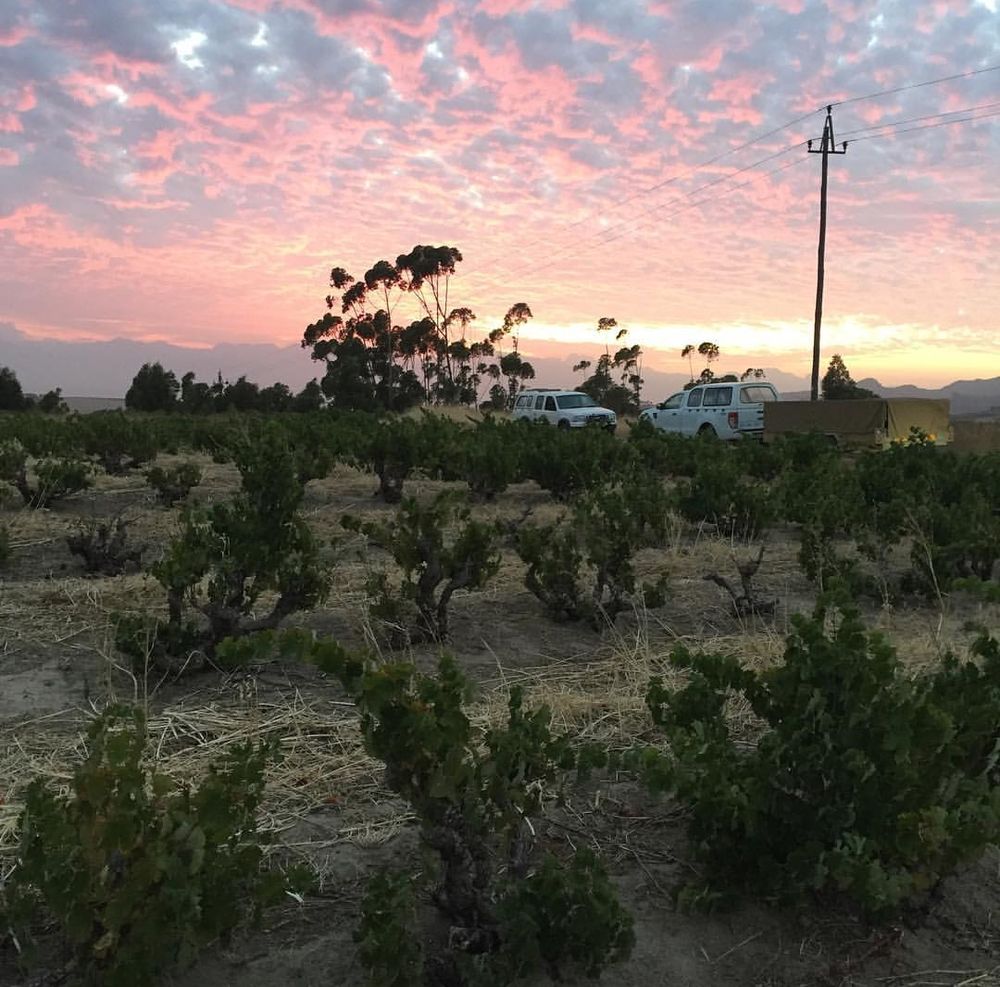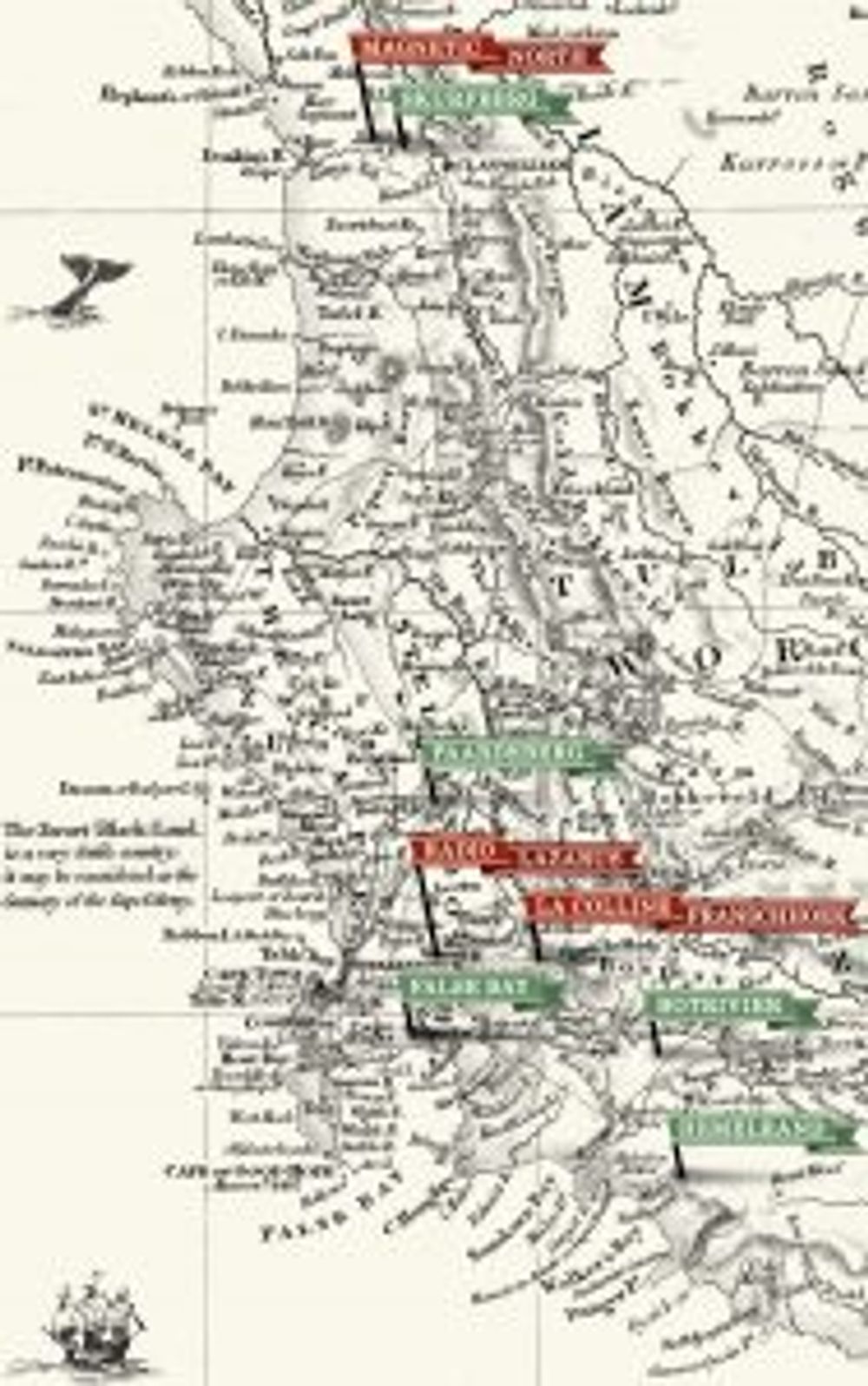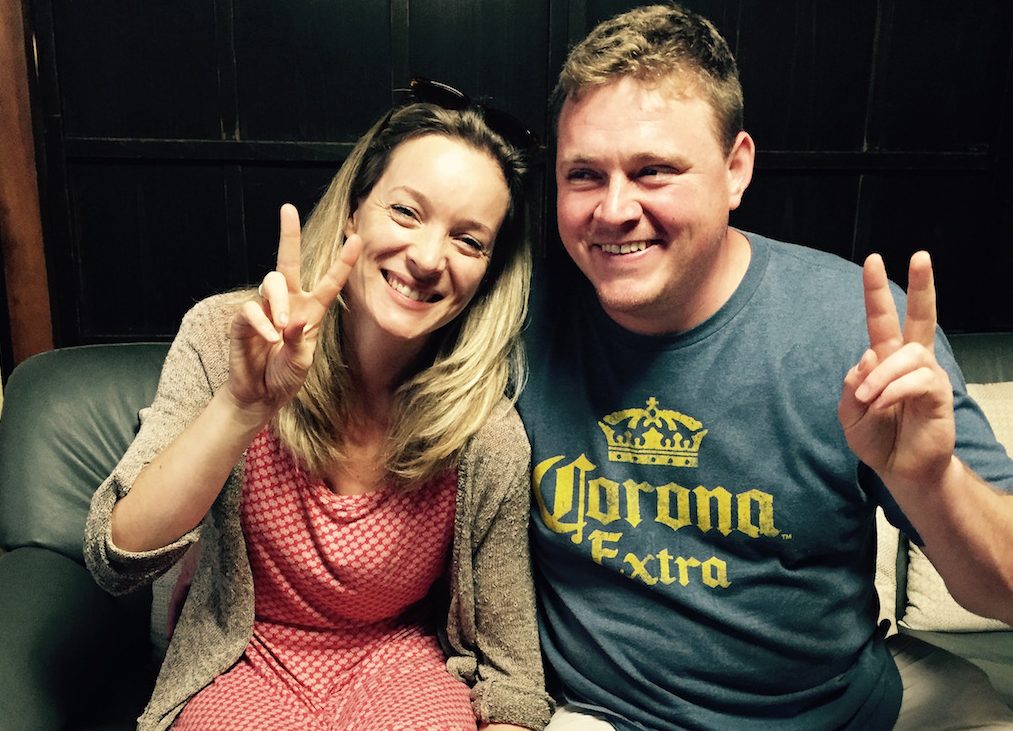Alheit Vineyards has one foot in the past, and one in the future – with Phase Two of the winery story involving planting its own vines.
Just after apologising for the rather dashing mullet he is currently growing for Cape Wine, Chris ‘Butch’ Alheit declared that 2017 was a pivotal year for Alheit Vineyards. In London for his 2017 vintage release, he heralded the year as the end of Phase One for him and wife Suzaan’s much applauded project, with Phase Two just beginning. . .

A new dawn for Alheit: picking at Nuwedam
Phase One of 2011-2017 has seen numerous dazzling moments: their monumental rise from zero to hero with the first vintage of Cartology and an almost overnight cult status; the arrival of three kids; the creation of an enviable cellar, now complete with concrete eggs, amphorae and Stockingers and, as of the 2017 vintage, the release of three new single vineyard Chenin Blancs that have already astounded critics worldwide. Cartology has been the flagbearer of Alheit Vineyards since day one, so a vertical tasting seemed a worthy way to say totsiens to the first phase.
Cartology over the vintages:

Chris and Suzaan Alheit
“Not much has changed really” Chris comments. There might be a few more hands in the cellar, but it’s still him driving the bakkie and trailer loaded down with grapes and Suzaan running the press. The wine is a celebration and a study into the heritage and history of the extraordinary old vineyard sites around the Cape.
A couple of ‘new’ old vineyards have been introduced in the 2017, but the blend, year on year (around 90% Chenin to 10% Semillon) has stayed much the same. Farming wise, it’s about being close to nature and concentrating on the health of the soil. In the cellar (although he may not court the world of natural wine), in effect, that’s what these wines are – whole bunch pressing of fruit and no additions apart from sulphur, mostly long after fermentation has completed.
Tasting a vertical of Cartology 2011-2017

Cartology 2011:
22 barrels produced of the maiden vintage. “It could have been better” Chris admits, before highlighting how this wine retained 3.8g/residual sugar. Still incredibly youthful and expressive, with ylang ylang, mango – both the pulp and dried – and sun-ripened yellow pepper tang. Soaring acidity with a brisk, greek yoghurt mouth-coating palate and a baked hay grip. It’s vivid and still an exceptionally high toned wine.
Cartology 2012:
A slighter higher proportion of Semillon (14%.) There’s a little bit of reduction here; Butch comments that it took him some years to truly understand the La Colline Semillon and the importance of when to pick. Crunchy russet apple, toffee crisp, baked oats, bruised aniseed and quince membrillo. Dried fruit on the long finish.
Cartology 2013:
Nearly double the quantity produced in just two vintages. Quite putty-like on the nose with lemon shortbread, creme anglaise, pear skin and fennel. The wine teeters between sweetness and a mellow savoury streak, yet with immense power for the full breadth of the palate. Very slick.

Where the old vine sites are located
Cartology 2014:
82 barrels. “The vintage that nearly killed us” comments Chris, due to the high yields from the vintage’s wet conditions. A high proportion of Paardeberg fruit, and the first vintage to include fruit from the False Bay sites very near to the sea. Pears drizzled with honey, apple tarte tatin, white pepper, marzipan and white currants.
There’s such an abundance of characteristics – salted toffee apple, orange blossom and waxy lemon peel and phenolic bite. Might have nearly killed him, but damn good.
Cartology 2015:
The ‘ultimate’ vintage, with robust, warm, yet balanced wines prevalent. Divine nose of baking spices, lilies, flower oil and peach compote. A luxuriously filling mouth feel – cape gooseberries, lemon balm and beaten meadow herbs. Immense concentration – yes, it’s a bigger wine, but it holds it well. Such a baby.
Cartology 2016:
Some notes of creme caramel on the nose. Interestingly, this vintage incorporates more Stellenbosch fruit, including about 4% botrytic fruit. The poise of the acidity here conjures up images of a cobra about to strike – green papaya, mint stem, rockiness and oatcakes on the palate, with grilled grapefruit, rock salt and lime leaf.
Cartology 2017:
Just released and, as Chris says, “the best vintage yet”. But isn’t that what all winemakers say? Perhaps, but oosh, he’s got this. Playful, yet immensely serious. Incorporates four new sites of Chenin from Stellenbosch, Paardeberg, Tygerberg and Piekenierskloof. It almost glitters in the glass. Dried pineapple, granadilla juice, quince puree, tangerine and some salinity. A palate like mulberry silk.
So what’s in store for the future and Phase Two?

First, it’s to maintain the sites that have already survived so long that they are so privileged to work with. This is even more of a challenge now with the changing climatic conditions and the struggle that so many farmers are facing. Second, is continuing to learn and to improve.
Even more excitingly, Phase Two sees the beginning of planting vineyards. There’s already a block of Riesling that Chris has planted close to Ceres, 1260m above sea level and, at the time of this tasting, their cellar cool room was full of young Pinot Noir cuttings. If Phase One was this special, I can’t wait to see what’s in store for Phase Two.
The wines of Alheit Vineyards are distributed in the UK by Drefus, Ashby & Co
































